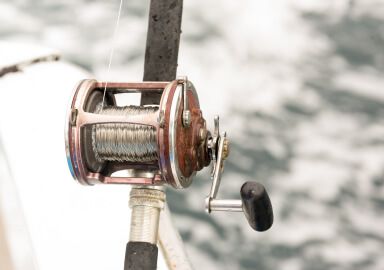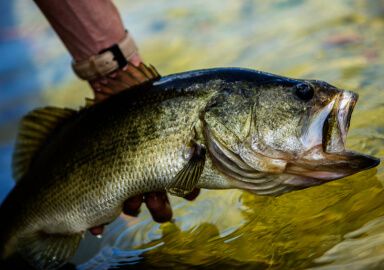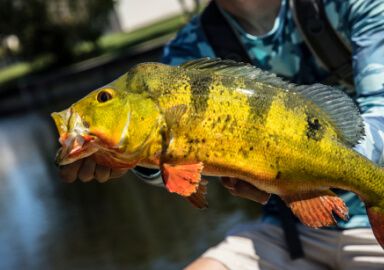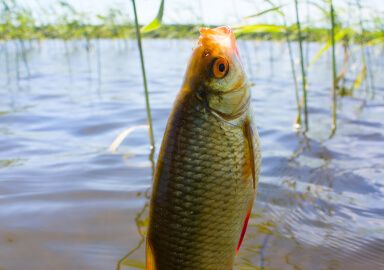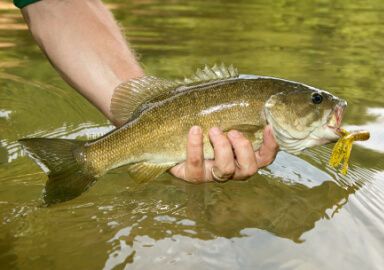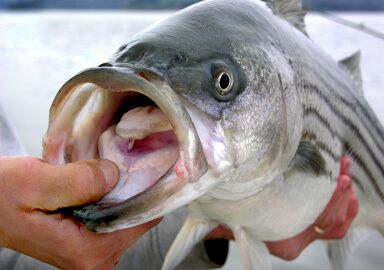Spotted Bass
Spotted bass are less known than other North American freshwater bass species, such as largemouth and smallmouth bass, but can also provide tremendous angling fun.
View 7 listings
7
listings
–
price starting from
1
countries
–
to the nearest trip
Where and When?
The range of spotted bass stretches from Texas to Florida. Their original distribution was mostly within the Mississippi catchment, but the species has been spread into many of the neighbouring waters and even some overseas. Within their range, they can live with the other two common bass species, but the spotted bass prefers warmer, more turbid and slower moving areas than smallmouth bass. The largemouth bass, in turn, often prefers deeper, slower moving waters than the spotted bass.
Spotted bass may be caught all through the year, but in different places and ways. In winter they are often located in deeper water in shoals around “drop-offs”, underwater mounds or rocks. They feed more readily than the other bass species in winter but, like them, they prefer warmer times. The best times are usually spring and fall, when the fish are preparing for spawning or winter. In summer it is often best to fish early or late in the day and to avoid the full heat.
About Spotted Bass
The spotted bass (Micropterus punctulatus) is an excellent sport angling species in much of the southern states of the USA. This species is easily confused with the largemouth bass and smallmouth bass. Spotted bass differs from those species in that its mouth is significantly smaller than that of the former and it lacks the dark bars down the sides of the latter. It has rows of dark spots below the lateral line from which it derives its name. The colours are similar to the other bass species, being yellowish green above and more silver around the belly. The maximum length is 64 cm. (25 in.) with a greatest mass of 5.2 kg. (11 lbs.), but most fish caught are well below this.
Juveniles feed mostly on invertebrates, such as copepods, and then gravitate to larger invertebrates such as insect larvae and crustaceans as well as an increasing proportion of small fish. Spawning takes place in April-May when, like other bass species, the male excavates a “nest” in the sandy, gravelly or muddy substrate using his tail. He then attracts a female to the site, they circle the nest with lowered bodies turned towards the nest, and simultaneously release sperm and eggs into the nest. The male then guards the site till the larval fish disperse while the female may find and spawn with other males.
How to Catch?
There are many ways to catch spotted bass and, while fly fishing can be fun and productive, by far the most popular way is by spinning with light tackle. Depending on the locality, topography and preferences, bank or boat fishing may be the best or easiest way to fish. In rivers, like trout, they may lurk in the current or behind rocks and then fly fishing or careful spinning can work well. Where the bass are usually depends on the time of year, day, the location plus the whims of the fish. In large dams a small boat gives the ability to move around and locate the fish that may be down to about 21,3m (70 ft.) in deep.
In winter the spotted bass are often offshore but will congregate around submarine “humps” where their food is located. Spotted bass often feed more readily than the other bass species and so, if you have cast a few times in an area without success, move on. Spotted bass specialists use a vast variety of baits including worms, live baits, crank baits, dropshots plus every conceivable colour or shape of plastic worm. There are several local varieties of spotted bass which may prefer different kinds of baits and also localities where “wolf packs” of large bass roam. It is best is to spend time obtaining good local knowledge and learn from the neighboring bass anglers, or, better yet, engaging a reputable local guide, to be rewarded with a good, hard-fighting trophy bass.





